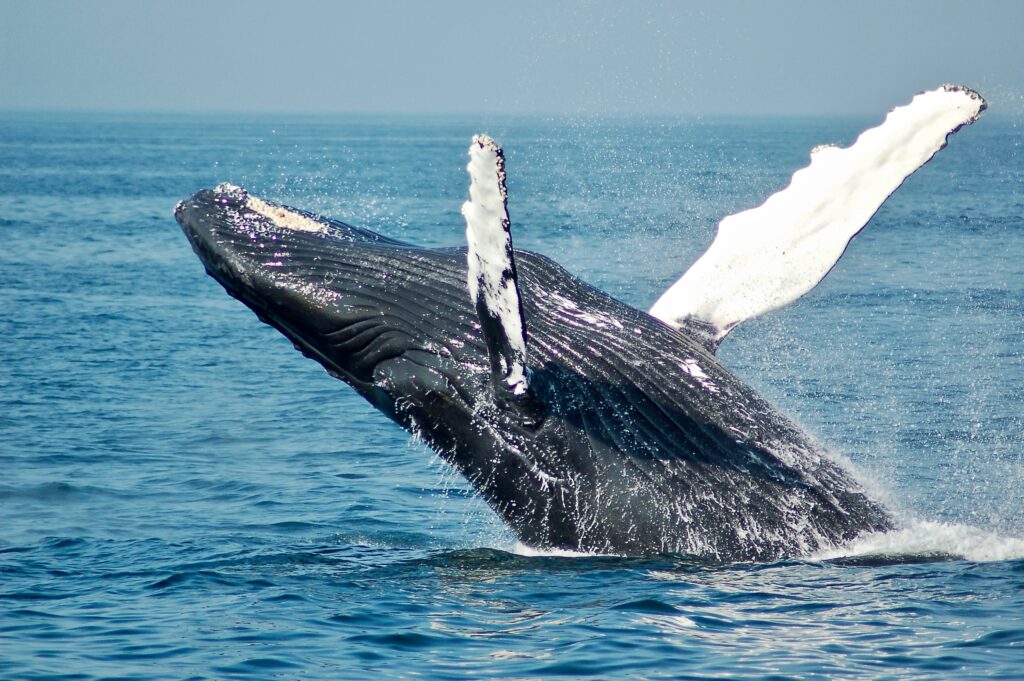People have hunted whales for thousands of years, but as our seafaring and hunting abilities improved in the 18th and 19th centuries, it became even more common. To make matters even worse for the whales, demand for whale blubber also increased, creating a very active hunting industry. The effects of that whaling industry still ripple throughout today’s whale populations, a new study shows.
The analysis suggests that some whales shifted their behavior to increase their chances of avoiding humans. They left their normal habitats, became “refugees”, and to this day, they still maintain the same behavior.

The ghost of human hunting
Researchers from the Zoological Society of London (ZSL) combed through over a century of North American whaling logs. The logs, which dated from 1792 to 1912, reveal the lasting impact of whaling on sperm whales living in the West Indian Ocean.
Historically, as the logs mention, these gentle giants used to show up predominantly on the coastlines of East Africa, Madagascar and the Arabian Peninsula. But a modern, 1995 survey showed that nowadays these whales appear more commonly in deeper parts of the ocean and near remote oceanic islands.
“It’s remarkable to consider that the distribution of the sperm whale, the world’s largest toothed animal, could still be being shaped by the ghost of human hunting from several generations ago,” said Tom Letessier, lead author of the paper and research fellow at ZSL’s Institute of Zoology.
This makes a lot of sense considering how social and intelligent sperm whales are.
“Sperm whales are highly intelligent, social animals, who are known to adapt their behaviour to protect themselves and family members against threats. While the higher chance of being hunted would have directly reduced the number of whales in coastal habitats, the ancestors of today’s sperm whales also likely learnt to avoid these areas and instead sought refuge in the open waters – where they remain today, despite the increased challenges of doing so.”

Researchers call this type of behavior a “refugee” behavior. Refugee species are those that for whatever reason, are confined to habitats that are not optimal for them. This affects their fitness and survival chances and poses numerous long-term risks. Typically, it’s human activity that’s pushing species towards refugee behavior.
The fact that humans can have this impact is not a new finding, but what is remarkable is that the impact can last such a long time. Although the heyday of whaling is behind us and several conservation measures are in place, it goes to show how much we can affect a species, often in ways that are hard to foresee. Professor Samuel Turvey from ZSL’s Institute of Zoology, a co-author on the study, continues:
“It’s crucial to address any current threats that are pushing a species towards extinction, but we must also recognise that some species now survive only on the very edges of their ideal habitat. In the case of the sperm whale, understanding not only where the species is found today, but also where it once thrived, is key for effective, science-driven conservation planning and action to protect this incredible species.
“Our study shows the power of utilizing historical records to unlock important information for modern-day conservation that would otherwise be lost to the past. It’s essential that scientists continue to use unexpected sources of information, such as environmental archives, when seeking to understand how human activity impacts the natural world – and what we can do to restore it.”
In addition, just because whaling isn’t as big as it used to be, doesn’t mean that whales are comfortable and protected at the moment. It’s estimated that, at minimum, 300,000 whales and dolphins are killed each year as a result of fisheries bycatch, while a number of other threats such as shipping and habitat loss threaten most populations. Letessier adds:
“Although commercial hunting for sperm whales has ceased and the species is now protected under various acts and treaties, they are still vulnerable to human factors such as entanglement in fishing nets, pollution and boat collisions.”
For now, it’s unclear how many other species are suffering from similar long-term damage, but challenges like this should be considered for conservation measures and for assessing how well off a species truly is.
The study was published in Conservation Biology.






